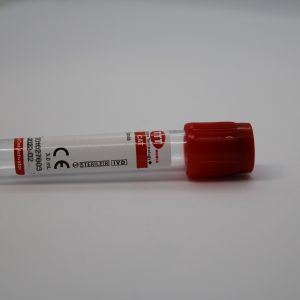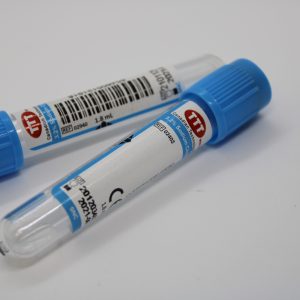Blood Collection Tube

BLOOD COLLECTION TUBE PRODUCT INFORMATION
Heparin Blood Collection Tubes
Heparin tubes are available with two types of additives: Lithium Heparin and Sodium Heparin. Lithium Heparin tubes are classified into two categories: with gel and without gel, depending on clinical requirements. Heparin prevents blood clotting and enables the separation of plasma. These tubes are commonly used in both routine and emergency biochemistry tests.
Lithium Heparin Blood Collection Tubes
The inner surface of the tubes is sprayed and dried with lithium heparin. They are manufactured in various volumes. These vacuum blood collection tubes are made of PET plastic and comply with international standards. Used in clinical laboratories for venous or whole blood tests. These tubes are intended for single use only. Lithium heparin prevents coagulation.
Sodium Heparin Blood Collection Tubes
The inner surface of the tubes is coated with sodium heparin. Available in various volumes, they are manufactured from PET plastic according to international standards. These vacuum tubes are used for venous or whole blood tests in clinical laboratories and are for single use only. Sodium heparin acts as the anticoagulant.
EDTA Blood Collection Tubes
EDTA tubes are available in two types: K2EDTA and K3EDTA. K2EDTA tubes come in gel and non-gel options, tailored to specific needs. EDTA tubes are mainly used in hematology tests.
K2EDTA Blood Collection Tubes
Prepared by spraying and drying K2EDTA onto the inner surface. Manufactured in various volumes. Made from PET plastic according to international standards. Commonly used in hematology labs. K2EDTA chelates calcium ions in the blood to prevent clotting.
K3EDTA Blood Collection Tubes
The inner surface is sprayed and dried with K3EDTA. Produced in various volumes from PET plastic in line with international standards. Generally used in hematology labs. K3EDTA works by binding calcium ions to inhibit clotting.
Coagulation Tubes
Used for coagulation tests. These tubes contain buffered trisodium citrate solutions at 0.109 mol/L (3.2%) or 0.129 mol/L (3.8%), and utilize double tube technology to provide optimal conditions for PT and APTT test results. The inner tube is made of PP, and the outer tube is PET plastic, both complying with international standards.
9NC Coagulation Sodium Citrate 3.2%
Prepared with 3.2% trisodium citrate. Produced in various volumes. Commonly used in clinical chemistry labs.
9NC Coagulation Sodium Citrate 3.8%
Prepared with 3.8% trisodium citrate. Available in various volumes. Typically used in clinical chemistry labs.
Serum Tubes (With Gel – Without Gel)
Serum tubes are used in clinical biochemistry and immunology laboratories. A special clot activator coated inside the tube facilitates coagulation. Tubes containing inert gel form a barrier between serum and blood cells during centrifugation, ensuring high-quality serum separation. Thrombin-based serum tubes allow for rapid clotting and quick serum separation. These PET vacuum tubes are single-use and manufactured to international standards.
Plain Vacuum Tubes
Produced without any additives. Available in various volumes. Commonly used in clinical chemistry labs.
Vacuum Clot Activator Tubes
The inner surface is coated with a clot activator. Manufactured in various volumes. Widely used in clinical chemistry labs. The clot activator accelerates the coagulation process.
Sodium Fluoride Potassium Oxalate Plus Tubes
These are sterile, vacuum, low-volume sample tubes designed for integrated collection systems. Color-coded caps indicate additive types and volumes. Contain potassium oxalate and sodium fluoride. Used to obtain stabilized plasma samples for glucose analysis.
ESR Tubes
Designed for manual or automated erythrocyte sedimentation rate (ESR) testing in accordance with the Westergren method. Suitable for use with venous or whole blood samples in clinical laboratories.
Glucose Tubes
TTT Glucose Tubes contain Sodium Fluoride and K3EDTA. Used in tests for blood glucose, HbA1c, and glucose tolerance.


















